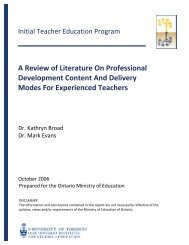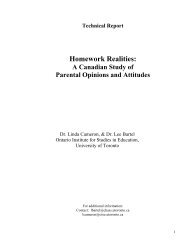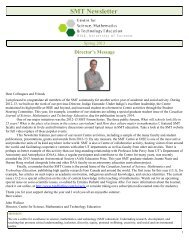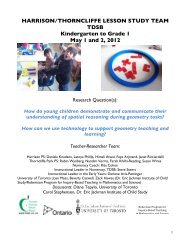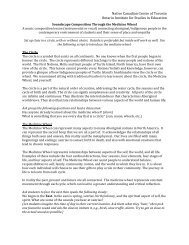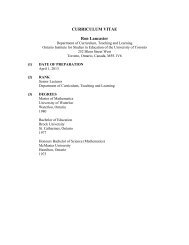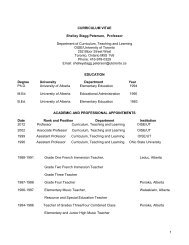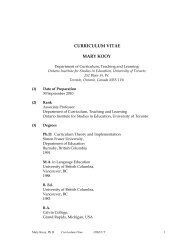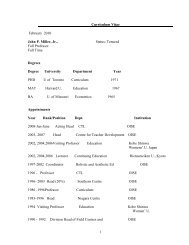The Ontario Curriculum, Grades 9-12 - Ministère de l'éducation ...
The Ontario Curriculum, Grades 9-12 - Ministère de l'éducation ...
The Ontario Curriculum, Grades 9-12 - Ministère de l'éducation ...
You also want an ePaper? Increase the reach of your titles
YUMPU automatically turns print PDFs into web optimized ePapers that Google loves.
estaurants, reusing cooking oil as a biofuel, using locally grown produce to reduce the<br />
need for long-distance transportation)<br />
C1.3 i<strong>de</strong>ntify, through research, an appropriate co<strong>de</strong> of ethics and/or gui<strong>de</strong>lines for sustainable<br />
tourism and <strong>de</strong>scribe how they could be applied to the operation of local food and<br />
beverage services facilities<br />
C1.4 i<strong>de</strong>ntify ways in which the food and beverage services sector could offset its impact on<br />
the environment (e.g., <strong>de</strong>velop or support a tree planting program, <strong>de</strong>velop or contribute<br />
to a carbon offset fund)<br />
MANUFACTURING TECHNOLOGY<br />
Manufacturing Engineering Technology, Gra<strong>de</strong> 11,<br />
University/College Preparation (TMJ3M)<br />
A. Manufacturing Technology Fundamentals<br />
A1. Design Process<br />
A1.3 explain why technological concepts (e.g., aesthetics, control, environmental<br />
sustainability/stewardship, ergonomics, fabrication, function, innovation, material,<br />
mechanism, power and energy, structure, safety, systems) are important consi<strong>de</strong>rations in<br />
the <strong>de</strong>sign process …<br />
A1.4 explain how the application of technological concepts in <strong>de</strong>sign or other problem-solving<br />
processes can result in products that better meet human needs or wants (e.g., a ramp to<br />
replace a stairway, a lever-type door handle to replace a round knob, a remote control to<br />
operate a television, energy-efficient <strong>de</strong>vices to replace inefficient ones)<br />
C. Technology, the Environment, and Society<br />
C1. Technology and the Environment<br />
C1. <strong>de</strong>monstrate an un<strong>de</strong>rstanding of ways in which the manufacturing industry affects<br />
the environment<br />
C1.1 analyse the effects that various manufacturing activities have on the environment (e.g.,<br />
the effects of waste disposal, power consumption, processing of raw materials; effects on<br />
Aboriginal hunting and gathering grounds)<br />
C1.2 explain the benefits of using environmentally friendly processes and products in the<br />
manufacturing process<br />
C1.3 explain how various sources of power generation (e.g., coal, nuclear, wind, solar,<br />
geothermal) and transportation methods (e.g., truck, rail, ship) used in manufacturing<br />
affect the environment<br />
C2. Technology and Society<br />
C2.2 explain how the manufacturing industry affects the local and provincial economy (e.g.,<br />
with respect to job creation, standards of living, sustainability and conservation of the<br />
environment, impact on First Nation communities)<br />
202 Environmental Education, <strong>Gra<strong>de</strong>s</strong> 9−<strong>12</strong>: Scope and Sequence of Expectations, 2011



